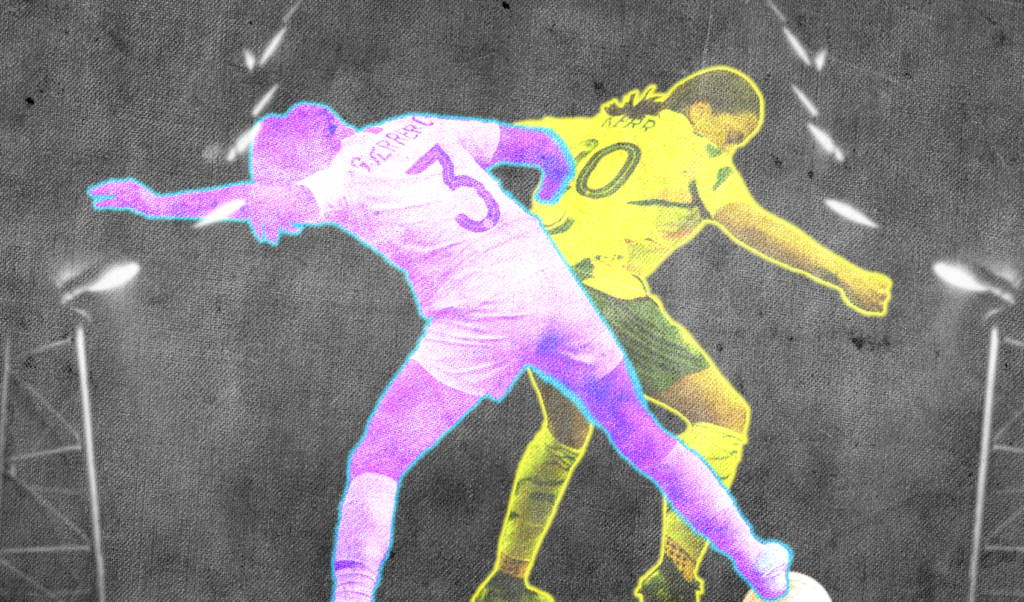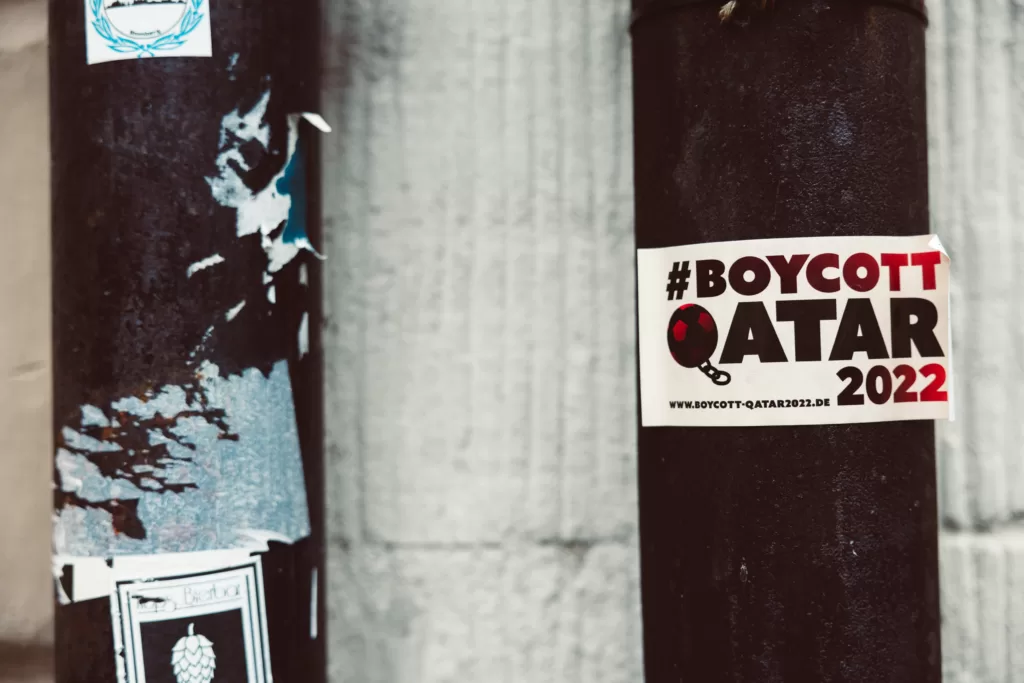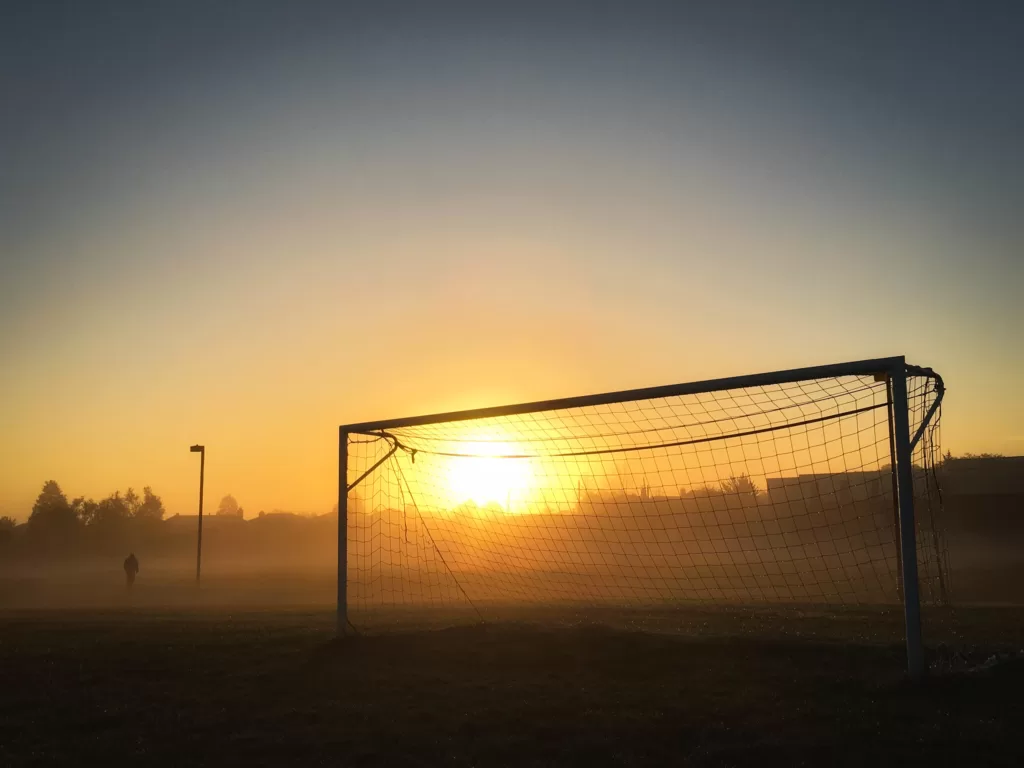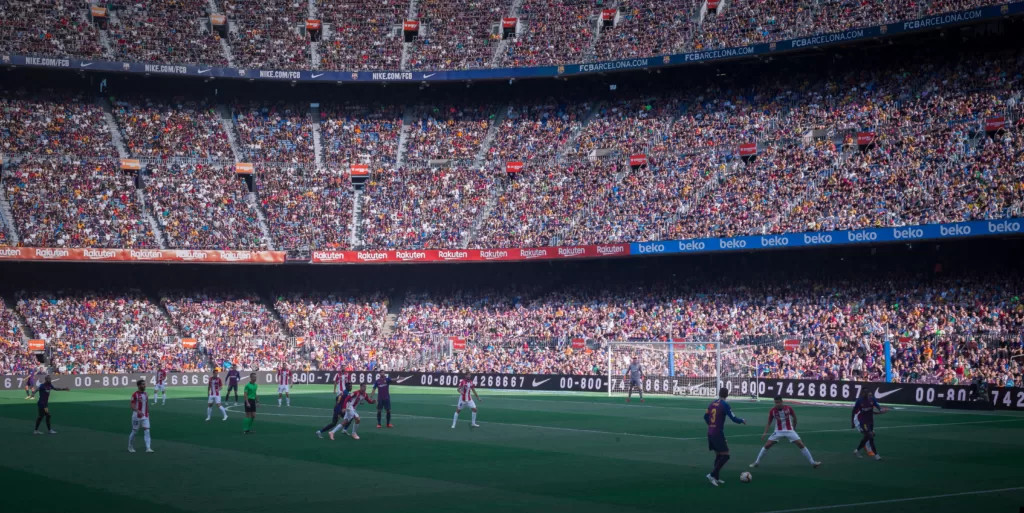FIFA is proud of its hugely successful 2023 Women's World Cup, but momentum could evaporate if issues around pay and player safety aren't properly addressed.
 The 2023 FIFA Women’s World Cup has been a rousing success to date, but how much of that can FIFA take credit for? : United States Embassy Australia, Wikimedia Commons Public domain
The 2023 FIFA Women’s World Cup has been a rousing success to date, but how much of that can FIFA take credit for? : United States Embassy Australia, Wikimedia Commons Public domain
FIFA is proud of its hugely successful 2023 Women’s World Cup, but momentum could evaporate if issues around pay and player safety aren’t properly addressed.
In the 92nd minute of South Africa’s drawn FIFA Women’s World Cup match against football giant Italy, striker Hilda Magaia runs onto a pass at the top of the box. Magaia, who scored her country’s first ever Women’s World Cup goal a week earlier, springs past three lunging Italian defenders and curls the ball in to find Thembi Kgatlana, who blasts the ball into the net. South Africa, in its first Women’s World Cup, is through to the round of 16.
It is perhaps the most striking upset result of this World Cup, but far from the only one: Nigeria beating co-host Australia, Colombia’s last-minute winner against Germany, Portugal holding the United States to a draw and Jamaica advancing at the expense of Brazil are signs of the closing gap in women’s football that pundits are noticing.
The gap is closing and the game is growing: ticket sales in Australia and New Zealand are exceeding expectations, domestic television ratings for Australia’s Matildas are shattering records and their merchandise sales are easily out-pacing their male counterparts, the Socceroos.
FIFA President Gianni Infantino says he’s “a happy man”, but the women on the pitch deserve the most credit, not the men at FIFA.
The Women’s World Cup has been a grand stage for Infantino’s administration to celebrate “FIFA 2.0“, with it being the first tournament to be awarded, developed and delivered since the much-hyped ‘roadmap’ for the ‘restructuring’ of football’s global governing body.
Released in 2016 following a series of high-profile corruption scandals, FIFA 2.0 sets out reforms pledging greater transparency, accountability and cooperation. A central plank of the new agenda is an overt commitment to growing women’s football and, in FIFA’s words, “bringing it into the mainstream”.
Undoubtedly, some of the interest and excitement surrounding the 2023 Women’s World Cup is due to FIFA’s growing support and investment in women’s football.
The rousing underdog success stories so far vindicate FIFA’s call to expand the World Cup to 32 teams (though Infantino’s pre-tournament suggestion that the expansion would encourage investment because it gave some countries “a realistic chance of qualifying” left many wisely wary).
FIFA has also introduced the largest prize pool for its flagship women’s tournament, tripling the prize money from USD$30 million four years ago to USD$110 million in 2023. After decades of underfunding and underpayment, players are starting to see due recognition and rewards for their exploits.
A further USD$42.5 million has been allocated for preparation funding and club benefits, and FIFA has introduced nearly USD$49 million in “ring-fencing” player payments, meaning each athlete is allocated at least USD$30,000 for participating in the tournament.
While the disparity between the men’s and women’s World Cups is still steep (the men at the 2022 Qatar World Cup competed for a prize pool roughly three times the size as the women’s in 2023), FIFA has set a target to provide equal rewards across the competitions by 2027.
The boost in prize money is backed by a new commercial strategy that no longer treats sponsorship and media rights like an afterthought. With a broadcast rights budget of over USD$500 million to supplement investment in players, the 2023 tournament is showing tangible signs of progress under FIFA 2.0.
But while FIFA is showing signs of catching up to the social and sporting zeitgeist, it is important to consider who should ultimately be credited with the closing of the gap in women’s football on its biggest stage.
FIFA has prioritised the women’s game more recently, but as football correspondent Rory Smith recently argued, the expansion of the World Cup has “worked despite the national associations … rather than because of them.”
The successes of this year’s tournament come down to a host of factors that have little to do with FIFA or the World Cup itself.
For instance, FIFA’s promotion of its increased prize pool fails to mention that it has no plan to guarantee players will actually be paid what they have earned. Instead, FIFA has ceded responsibility to member federations who are under no legal obligation to distribute the USD$30,000 payments to every player as promised.
This is particularly troubling in light of the disputes between players and their national federations that dominated the build-up to the World Cup: Canada, Jamaica and South Africa were all involved in battles over clear disparities between the women’s team and men’s team in payment and bonuses, working conditions and resourcing.
The Nigerian team were rumoured to be contemplating a boycott of their first match over withheld payments and interference from their federation.
In England, where the women’s game is seemingly more professional and better supported than elsewhere, there has been long-running disagreement between its women’s national side and federation over bonus payments for the 2023 tournament.
Outside of pay inequality, abuse and harassment of players continue to plague the women’s game. A range of tournament qualifiers are among the countries in which allegations of abuse have been reported in football, including Argentina, Australia, Canada, Colombia, Haiti, Ireland, the Netherlands, the United Kingdom and the United States.
The US case is the most high profile. A year-long independent investigation found its National Women’s Soccer League (NWSL) was “a league in which abuse and misconduct – verbal and emotional abuse and sexual misconduct – had become systemic, spanning multiple teams, coaches, and victims”.
The report also found a failure at all levels to put in place basic safeguards for players, pointing the finger at teams, the NWSL and the sport’s governing domestic body, US Soccer.
In 2023, Australia’s football players’ union announced a plan to tackle abuse and harassment of players in response to alleged systemic failures to protect women in the sport.
Just as FIFA could bring about pay parity with a stroke of the pen, it could do more to hold national member associations accountable for protecting the wellbeing of the players.
It could for instance require member associations to mandate employment contracts with minimum legal requirements in line with national and international labour standards. It could also institute stronger checks and balances to ensure prize money for major tournaments is distributed in an equitable way.
Much has been made of the possibilities for the 2023 Women’s World Cup to be a watershed moment for women’s football and even gender relations more broadly.
There are hopes that the tournament will help the sport grow and bring more commercial backing into the women’s game. As the adage goes, “if you can see it, you can be it”, and backers are confident that making the world’s top female stars more visible will help attract more women and girls.
But there’s a long way to go and, despite FIFA’s steps forward, anybody with a passing interest in football knows that FIFA is an organisation known for its cronyism, corruption and self-interest.
When it comes to women’s football, FIFA’s long history of misogyny and disinterest paved the way for undervaluing its players, coaches and officials, which might not yet be over: during this World Cup, FIFA’s vice president admitted to “not believ[ing] in equal pay.” He went on to question what the “ceiling” of women’s football might be.
Giving credit where it’s due is important, but so too is critically examining narratives around the World Cup that celebrate successes while neglecting the long-entrenched issues that remain in the women’s game.
The pioneers are on the pitch, where they always have been.
After decades of unprecedented success in competition and years of contentious courtroom battles, the US Women’s National Soccer Team won a historic collective bargaining agreement in 2022 to guarantee its players equal pay with their male counterparts. Other countries including Australia, Aotearoa New Zealand and Ireland have also reached equal pay deals with their national football associations.
These breakthroughs have not come about because of FIFA benevolence or oversight: they are the result of years of persistence from players, relentless campaigning, media appearances, court filings and endless negotiation.
That same determination from athletes on the pitch has driven the rising interest in women’s football, rather than the organisations which are now reaping the financial rewards.
Exactly one month before the South African women’s national squad overcame Italy in Wellington, the players went on strike and boycotted a pre-tournament friendly against Botswana.
They sat in the stands, watching an embarrassing makeshift “national team” lose 0-5, fielding a lineup that included a 13-year-old girl.
Three weeks later, the team’s captain told the media the dispute had been settled and players had been guaranteed their money. A week later, Magaia found Kgatlana in the 92nd minute and the rest is history.
Dr Adam Beissel is an Assistant Professor of Sport Leadership and Management (SLAM) at Miami University (OH).
Dr Andrew Grainger is a Lecturer in sociology of sport and physical cultural studies at Western Sydney University.
Originally published under Creative Commons by 360info™.











